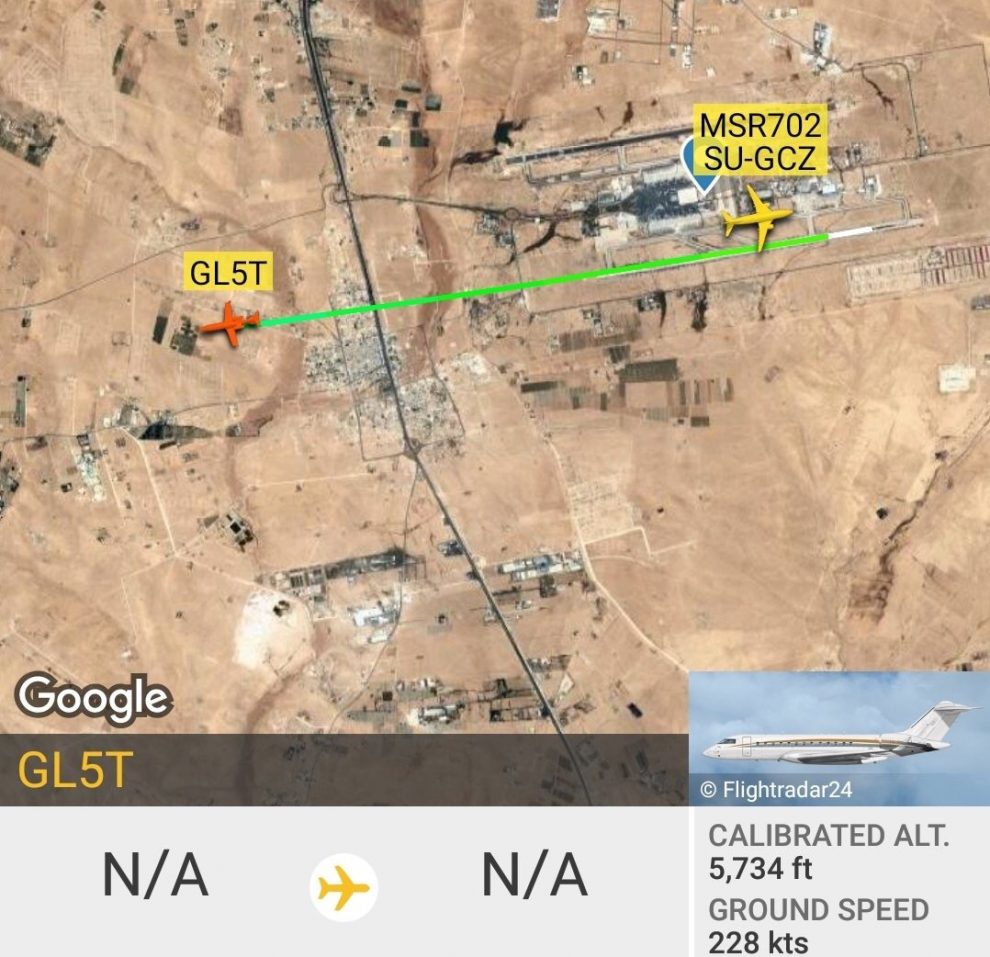The news of a plane coming to “Pakistan from Israel via Amman, Jordan is the talk of the town after BBC Urdu journalist Tahir Imran Mian broke it. Since then more information is coming on the internet explaining this flight and how people like Tahir Imran get to the conclusion that the plane did come to Pakistan. A Twitter user Luke wrote a detailed thread on twitter explaining the whole thing. He wrote that “just to clarify, I have no interest in the passengers or the outcome of the event. I just couldn’t take blatant disregard of facts and sheer disrespect of Aviation.” To take his message further we have decided to reproduce his Twitter thread here.
So here it in his own words which starts from the following tweet.
For those who STILL think that the ?? IL plane in question never entered ??Pakistani airspace and was a 'foreign funded propaganda' by @avischarf – I will try explaining how @flightradar24 works with minimum jargon.
— //Luke (@mxcaltrz) October 28, 2018
What services like FlightAware and flightradar24 do?
Services like FlightAware and flightradar24 are crowdsourced and they exist to serve both Aviation professionals, hobbyists and everyday people like us. In a few tweets, I will explain how it works. Ever googled a flight number and it also showed you the % of the journey completed? or a link below to give you a “live location” of that particular flight? That is made possible from the data aggregated from one of these services.
The story of “Israeli plane in Pakistan”
You must be thinking, what’s the big deal? Well, for starters, the aircraft isn’t “connected” to the ground for anyone to look it up like you could do with your iPhone or Android phone. Once airborne, it depends on satellites for navigation and radio towers throughout its path for communication. Now, of course, the Civil Aviation of a country gets to track it using their radars throughout their airspace (country borders) but that data has limitations.
1. Only accessible by them.
2. Redundancy, breakdowns, data limitations.
Global space-based ADS-B data
After the loss of Malaysian Airline #MH370, the International Civil Aviation Organization @icao mandated all aircraft for compliance with the Global Aeronautical Distress and Safety System (GADSS) to track the aircraft. The significance of companies like @flightradar24 and @flightaware that some Pakistanis and Pakistani media is thrashing today & calling them a propaganda. @AireonLLC and FlightAware announced a partnership to provide this global space-based ADS-B data to airlines for flight tracking of their fleet. Entered an agreement with @GomSpaceGroup for space-based tracking in 2016. Both FR24 & FA are to provide land & satellite-based flight data to airlines, civil aviation authorities etc all over the world.
How does it work?
This brings us back to how it works. The ground aspect, for now: FlightRadar24 and FlightAware as I mentioned earlier are ‘crowdsourced’ – meaning that they get their data from the ‘crowd’ aka the contributors. They can be companies, hobbyists all around the world. FlightAware has contributors in about 188 countries with some countries having less than 10-20 feeders/contributors and some as high as 1000s. A total of 19 thousand something they have on their network.
What does a feeder do?
What a feeder does is, they harness the “ADS-B” (short for ‘Automatic dependent surveillance – broadcast) radio signals. A tiny device and antenna that connects to the power and your internet and its good to go. Totally unattended. Think of it as a small FM radio receiver. Think of planes like FM channels. Zombie channels. As soon as one passes within the range of the receiver, the receiver will pick the signals that’d be relaying the details. Details are usually the aircraft identification (or registration), its altitude, its speed, its heading (direction) and a squawk code, assigned at the takeoff airport by air traffic control.
What is Squawk code?
Think of squawk as your WiFi SSID or WiFi name that changes with every new flight plan that is filed before takeoff. Squawk can also be helpful in emergency situations. Imagine you’re kidnapped and you rename your wifi hotspot “HELP IM KIDNAPPED”.
Squawk is the identification code that an airport’s secondary radar picks up and shows alongside a tiny blip on their screen. If the pilot changes it, the change reflects in few seconds on the radar screen.
Squawk code 7500 means hijack
7600 radio failure
7700 emergency onboard
Now think of a situation where squawk 7500 was keyed in but due to mountainous terrain, radar couldn’t pick it up and minutes later the plane is whoop, gone. (Radar works on reflection and stuff) like MH370 disappeared, without a trace.
But then within those valleys lived someone who was much into aircraft and had volunteered to install an ADS-B receiver from FlightAware. His receiver luckily picked up last few minutes before it left its range and that receiver also picked the squawk that said: “HIJACK” (7500).
Here, that 30 seconds of data could help speed up the rescue as one ground receiver helped single out the aircraft’s heading, squawk, altitude etc. This is the primary feature/benefit of crowdsourced data that these companies aggregate apart from other benefits/uses.
Challenges with ADS-B
ADS-B is fairly new. Many of old Boeing aircraft do not even have them onboard but any aircraft that wishes to fly after 2020 will need to have one. Modern ones do. It is fairly cheap to implement on the ground too.
Will also help in collision detection/avoidance system (TCAS) and general air navigation as the airspaces get more congested.
Feeders in Pakistan and the plane in question
On the ground, Pakistan has about 25 active feeders that feed to FlightRadar24 service. I’d say 2-3 in Karachi, 1-2 in Islamabad etc. When the aircraft in question entered Pakistani airspace, it was picked up by a feeder in or around Pakistan. Once it left that feeder’s range, that’s the grey area where people call it ‘fake’, Sure. Now a few hours later, the same aircraft with the same registration (M-ULTI) and same squawk shows up at another feeder near Islamabad, this time at 20,000ft (it was flying 40,000ft before)
Why the aircraft lowered its altitude?
Then this aircraft disappears for 10-11 hours. then again seen by the same receiver at 20,000 and then disappear throughout the dotted line only to be found at where it was last seen entering Pakistani airspace. (going back the same route) and at nearly the same altitude (40,000). Had it continued its journey, it would have shown up on any receiver in India but that’s not the case. Had it to continue its journey, it shouldn’t have lowered its altitude significantly as the journey ahead needs higher altitude (mountains, anyone?
Can it fly non stop from Amman to beyond Islamabad?
Also, the range is another limitation, only perhaps an hour or three more that it could’ve possibly flown. The data is a completely 3rd party, crowdsourced and cannot be possibly tampered. Can still be accessed if you have a premium account.
Did it land in Pakistan?
Did it land in Pakistan? Most probably, yes. Was it the ‘secret’ Israeli delegation? Can’t say. Is CAA of Pakistan lying? Nope. The aircraft is registered in Isle of Man & not in Israel so no one can call it an ‘Israeli’ plane. However, the plane is owned by a charter company from Tel Aviv. And Tel Aviv is Israeli capital.
There was an aircraft, it did enter Pakistani airspace and it did land otherwise it couldn’t have enough fuel to return back 10 hours later. What? Who? How? That’s for the CAA and incumbent government to tell.
Role of CAA and PAF
Impossible that a plane enters its airspace and they do not know where or how it flew through. Even @fawadchaudhry knows. They know it very well. Could be a matter of national importance that they aren’t willing to come up with the info. A reason why @pid_gov can boldly say we know of no plane that arrived from Israel. True. None arrived from Israel but hop from Israel to Amman and Amman to Islamabad.

















Add Comment